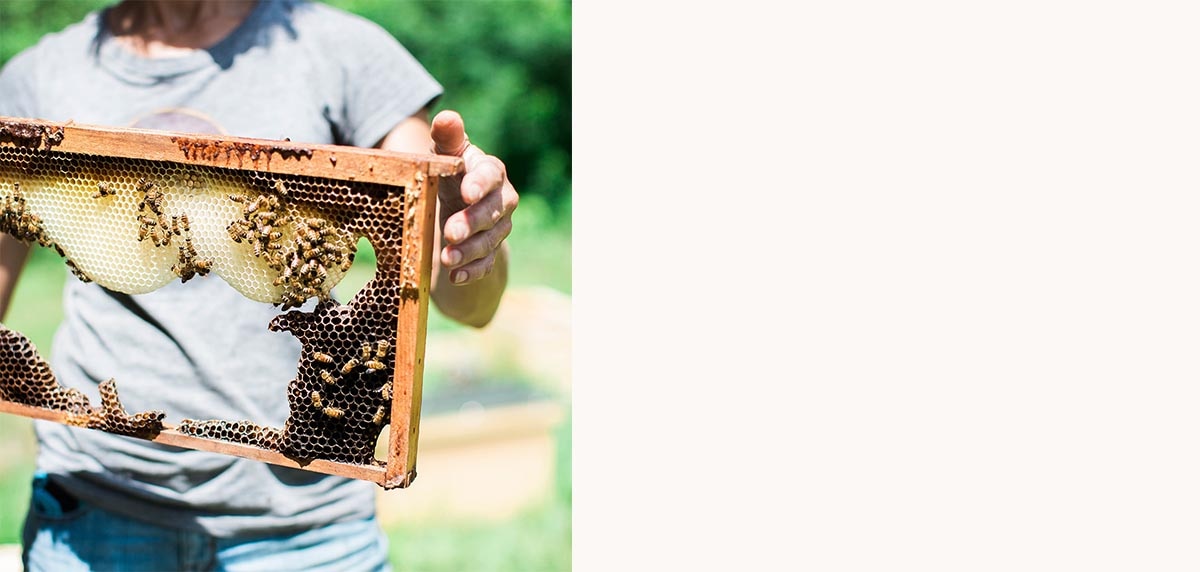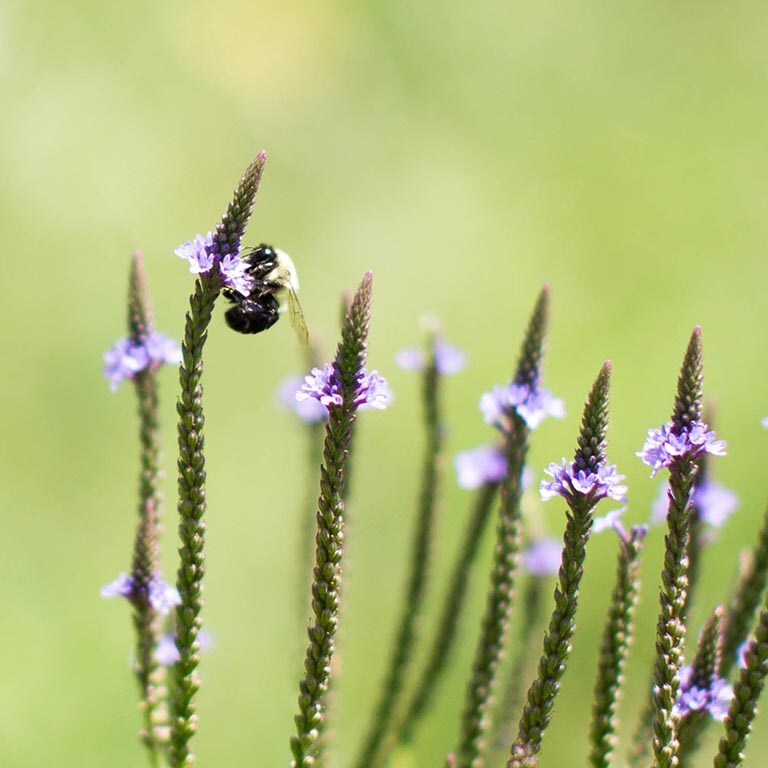Did you know we have five colonies of honeybees at our HQ in Minnesota? That's over 100,000 bees, raised in partnership with the University of Minnesota Bee Squad. We're passionate about protecting and preserving habitats for pollinators, because without them, we wouldn't be able to create the Aveda products you know and love! We also think the bees are pretty inspiring little creatures; they may be small, but what they accomplish while working together is truly incredible.
You may think you know the bee-autiful basics about bees, but there are definitely surprises in store; there’s more going on in the hive than you learned in school. Namely, that bees themselves are pretty feminist — and it’s not just about the queen! When they want to make things happen, there’s no stopping them. Here are some of our favorite facts about our friends, the Aveda bees.
- • All worker bees are female, and nearly all of the bees in a hive are female except for a handful of drone (male) bees.
- • The female honey bee is known to be one of the hardest-working creatures in the world. In just one day, a single honey bee will harvest several thousand flowers, making twelve or more trips and gathering pollen from just a single species each time.
- • An average female honey bee colony gathers pollen and nectar from up to 500 million flowers a year!
- • An average of one out of every three bites of food on our tables benefits from honey bee pollination. Some of our most nutritious and diverse food, like nuts, berries, fruits and vegetables, completely depend on the pollination process.
- • A queen bee can live up to five years and can lay up to 2,000 eggs per day! They don’t call her queen for nothing.
- • The Aveda bees build their honeycombs without any blueprints at all! Open wooden frames are used instead of plastic inserts, enabling the honeybees to build combs on their own – something they are absolutely brilliant at!
- • The Aveda hives are built entirely of natural pine with no interior or exterior treatments of any kind.
- • Our National Wildlife Federation-certified wildlife habitat supports the bees with a 58-acre oasis that provides food, water, cover and places to raise young, and that uses sustainable landscaping and gardening practices: no pesticides, herbicides, fungicides or insecticides.
- • A male drone bee doesn’t have a stinger, and they don’t gather nectar OR pollinate like their female worker bee partners. Drone bees’ main job is to fertilize the queen bee’s eggs.
- • Honey bees produce two to three times more honey than they need. At Aveda, the excess is carefully extracted from the wax and the wax is returned to the box for the colony to use at the start of next season.
- • A portion of the excess honey is saved to feed back to our bees in early spring, before a lot of the plants and flowers begin to bloom.
How can you protect these amazing little creatures? Make a few tweaks to your lifestyle and you’ll help them out immensely!
- • Say no to pesticides in your yard. Honeybees are exposed to pesticides, fungicides, herbicides, insect growth regulators and more on a daily basis with an average of six pesticide residues found in every pollen load on landscapes across the U.S.
- • Plant wildflowers for pollinators! Native plants give them a safe place to land AND to pollinate. Bees need diverse sources for immune system health and survival, which makes wildflowers, native plants and prairie grasses the perfect environment. They’re pretty to look at too, which is a bonus for you! More flowers equals more bees which equals more food (and plants and flowers) for all of us.









